The EU and the “-stan” countries.
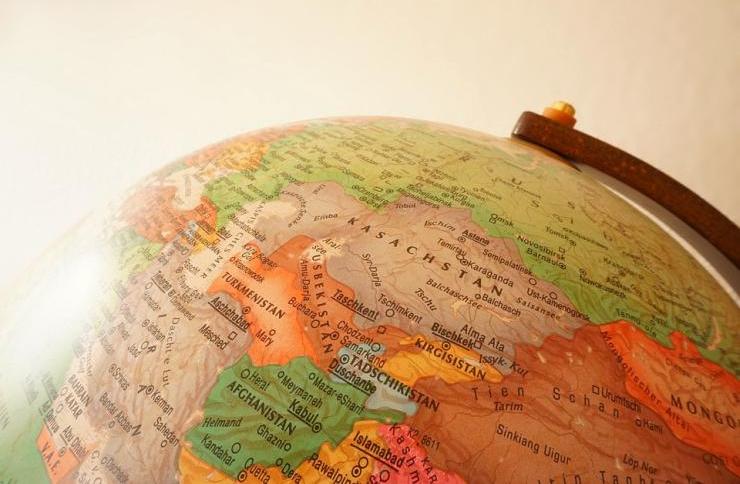
Central Asia plays a crucial role in the geopolitical agenda of many countries, including those of the European Union. The region is rich in mineral resources and fossil fuels, as well as being a crossroads for trade routes with the rest of Asia.
Central Asia includes a group of five states, Kazakhstan, Kyrgyzstan, Tajikistan, Turkmenistan and Uzbekistan, all of which emerged following the fall of the Soviet Union and united by the suffix
“-stan”, a term which in the Sanskrit language means land, nation, place.
Great interest in this geographical area has been shown by France, as suggested by the two on-site visits by the President of the Republic Macron which took place at the beginning of November 2023 intending to forge strategic alliances to exploit the energy resources in which the region is rich. This interest is not limited to France alone but extends to the entire European Union.
The EU Commission itself believes that the region represents a bridge towards China, Afghanistan, and the Middle East as well as a source of significant energy imports for the European Union.
Over the years, the EU has maintained an open dialogue with the countries of the area, inaugurating in 2019 a new strategy for the region which emphasizes promoting resilience, prosperity and regional cooperation in Central Asia.
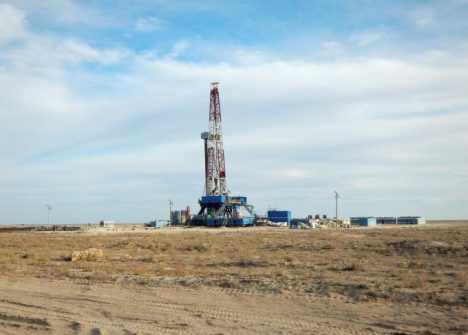
Kazakhstan. Mangistau region Drilling Rig in the steppe. It is a very important trading partner for the European Union. 123rf
Kazakhstan, the largest country in the region and first among the others in terms of GDP, is a very important trading partner for the European Union. The balance of payments leans clearly in Kazakhstan’s favour: in 2022 alone, it exported mineral products valued at 26 billion euros to the old continent and in 2021 it directed 39% of its total exports to the community market. For its part, the EU is the largest foreign investor in Kazakhstan, providing a total of €61.5 billion in foreign direct investment (FDI) stock in 2021.
The EU maintains solid trade also with Uzbekistan. The first of the quintet in terms of pro capita GDP, from 10 April 2021, it is the 9th country to join the Generalized System of Preferences Plus (GSP+), a status that allows it to benefit from preferential customs tariffs on goods entering the common market. Kyrgyzstan joined the same agreement, while Tajikistan joined only the standard GSP system.
Although Turkmenistan is mostly closed to the outside world and its status of “permanent neutrality” is even recognized by the United Nations, the Turkmen delegation still decided to strengthen relations with the EU as part of the strategy for the region together
with the other countries in the area.
The geopolitical implications of uranium
To understand the importance of Central Asia on the international stage, the presence of significant underground uranium deposits and its geopolitical implications must be highlighted. After the recent coup in Niger, this aspect has become more crucial than ever. The Sahelian state was the second largest uranium supplier to the European Union in 2022, contributing 25.4%, positioning itself just below Kazakhstan, which instead reached 26.8% of total uranium imports to Europe.
Following the coup, it cannot be ruled out that Kazakhstan will play an even more prominent role in the Union’s foreign policy plans, given that the country has one of the largest uranium reserves in the world estimated at 957,220 tonnes.
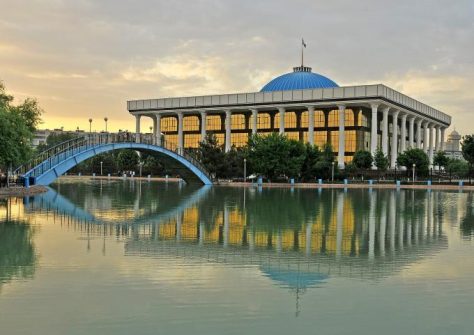
Uzbekistan. Parliament building in Tashkent. The country has significant uranium deposits. CC BY-SA 4.0/ LBM1948
Uzbekistan also has significant uranium deposits, notably 49,200 tonnes of uranium (tU) in reasonably secured recoverable resources and 49,220 tU in recoverable sandstone resources, as well as 32,900 tU in black clays. Although the deposits are smaller in size, the production is still conspicuous, with 3,500 tonnes of uranium extracted annually since 2020, a factor that leads the country to rank fifth in the world for exports of the mineral. Kyrgyzstan and Tajikistan also have uranium deposits, widely exploited in the Soviet era. In both countries, however, the current management of the resource is strongly influenced by the political context: in Kyrgyzstan, the Jogorku Kenesh, or the Kyrgyz Supreme Council, voted in May 2019 to ban the extraction and exploration of uranium, while in Tajikistan the uranium supply chain is still active today, but obtaining recent and accurate data is complicated since the regime established that the size of Tajikistan’s uranium resources is to remain secret.
The power of hydrocarbons
The large gas and oil resources found in the “-stan” countries, place them in an even more relevant geopolitical position which is why China is also interested in expanding its influence in the area. In fact, like the EU, Beijing does not have sufficient hydrocarbon reserves to satisfy internal demand, which makes the country dependent on imports. First, in terms of gaseous hydrocarbon deposits, Turkmenistan holds the fourth largest offshore and onshore gas reserves in the world, after Iran, Russia and Qatar. Based on 2021 data, China is the first to take advantage of the 11 trillion cubic meters of Turkmen gas, from which it manages to obtain 53.7% of its total imports. The third and fourth supplier countries to China are respectively Kazakhstan with 12.3%, just below Myanmar, and Uzbekistan which, with its reserves of 1.84 trillion m3, provides 6.58% of total imports.
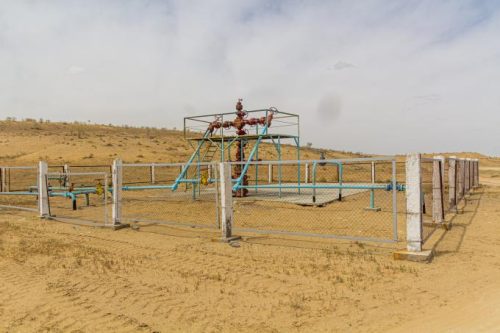
Turkmenistan. Natural gas facility near Darvaza (Derweze). It holds the fourth-largest offshore and onshore gas reserves in the world. 123rf
Kyrgyzstan and Tajikistan have negligible gas and oil reserves, not enough to satisfy domestic demand. As a result, they are forced to import energy resources from other countries in the area and from Russia.Kazakhstan remains the main protagonist. The country has significant gas reserves, estimated at 2,300 billion cubic meters in 2020, but oil is the resource on which the country relies to satisfy 50% of domestic energy demand (2020) and consolidate its influence at the international level thanks to its reserves estimated at 4.77 billion cubic meters. Large quantities of Kazakh oil are sent to EU countries. Of the 70 million tons extracted in 2021, 20% were exported to Greece, 16% to Germany, 8.7% to France, 7% to Spain, 6.4% to Austria, 5% to Lithuania and 4.3% to Italy. Together, uranium and oil allow Kazakhstan to emerge not only as a regional power in the heart of Asia but also as a major strategic player in the current geopolitical landscape. The estimate of the oil reserves of the other two countries in the area, however, is to be considered marginal compared to that of Kazakhstan: Uzbekistan and Turkmenistan have just under 100 million cubic meters, while Kyrgyzstan and Tajikistan, together, have less than 9 million cubic meters.
Future projections
In the future it is plausible to imagine a further rapprochement of the “–stan” countries to the orbit of influence of the European Union. As happened with the countries of South America and the Caribbean following the third enlargement of the Union, the potential entry of other former USSR candidates such as Georgia, Moldova, and above all Ukraine should lead to greater cultural closeness between the EU and the countries of the area, a basis on which new and fruitful dialogue can be started.The dialogue with these countries, over time, will necessarily have to extend to very important issues such as respect for human and social rights, as well as the progressive affirmation of democratic principles. Based on 2023 data provided by Freedom House, the five countries under analysis are characterized by being places with a well-established authoritarian regime, where political freedoms and rights
are completely absent.
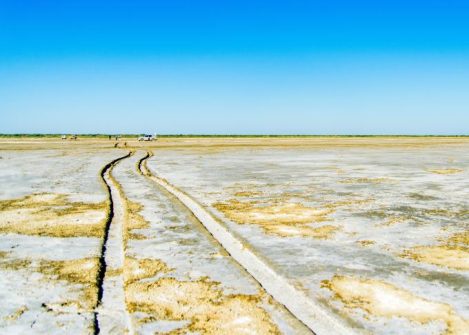
The Aral Sea is a formerly undrained Salt Lake in Central Asia, located on the border of Kazakhstan and Uzbekistan. 123rf
At the same time, on the side of climate and environmental diplomacy, the EU will have to put pressure on the Central Asian countries to apply more stringent rules for the protection of the environment and the mitigation of climate change. The consequences of exploiting resources in an unsustainable way are already visible in the area. The massive withdrawal of water to support Soviet agricultural production of cotton in the 1950s caused a drastic reduction in the size of the Aral Sea, located on the border between Uzbekistan and Kazakhstan, previously the fourth-largest lake in the world. The environmental impact of the loss of the Aral Sea is not yet fully known. What we do know is that the cotton that contributed to its destruction is harvested by forced labour and destined for European shops.
In conclusion, relations between the European Union and Central Asia outline a heterogeneous framework of political, economic and geostrategic interests. The region deserves the EU’s attention not only for its energy resources but also for the connections that could be developed with the rest of the Asian continent. (Open Photo: Pixabay)
Luca Sinagra Brisca/CgP



